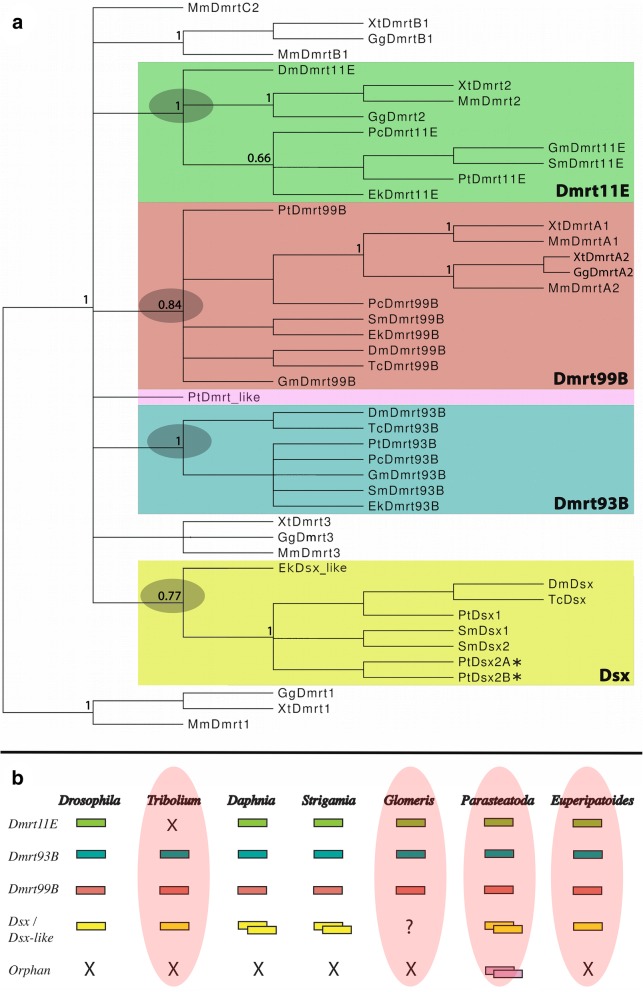Fig. 1.
Phylogenetic analysis and gene content. a Phylogenetic analysis of Dmrt genes. Species abbreviations: Ek, Euperipatoides kanangrensis (Onychophora); Dm, Drosophila melanogaster (Hexapoda: Diptera); Gg, Gallus gallus (Vertebrata); Gm, Glomeris marginata (Myriapoda: Diplopoda); Pc, Priapulus caudatus (Priapulida); Pt, Parasteatoda tepidariorum (Chelicerata: Araneae); Mm, Mus musculus (Vertebrata); Sm, Strigamia maritima (Myriapoda: Chilopoda); Tc, Tribolium castaneum (Hexapoda: Coleoptera); Xt, Xenopus tropicalis (Vertebrata). Green shade: Dmrt11E group. Red shade: Dmrt99B group. Blue shade: Dmrt93B group. Yellow shade: Doublesex (Dsx) group. Magenta shade: Orphan Dmrt gene. Grey shades mark relevant support values for the four monophyletic groups of panarthropod Dmrt genes. Node support is given as posterior probabilities. See text for further information. b Content of Dmrt genes in the model arthropod Drosophila melanogaster, the here investigated species (red shades), the water flea Daphnia magna and the centipede Strigamia maritima. Question marks indicate unclear presence of genes (embryonic transcriptome data). ‘X’ indicates missing genes. Each box indicates the presence of one paralog

